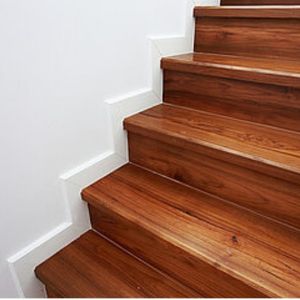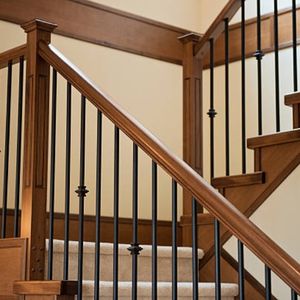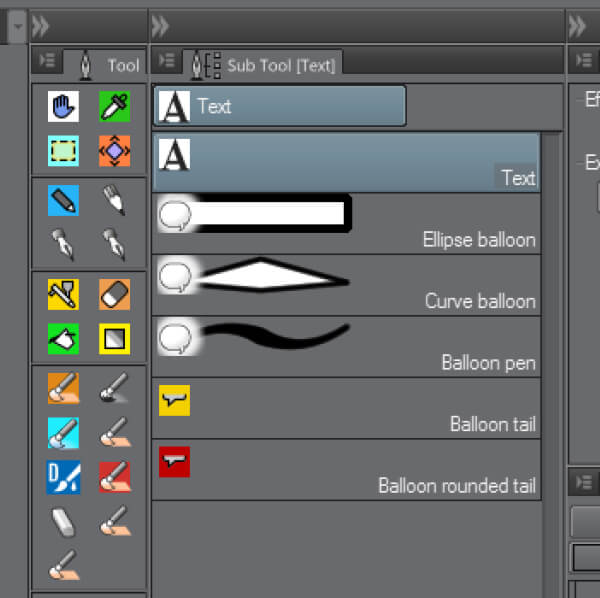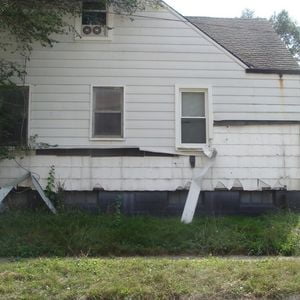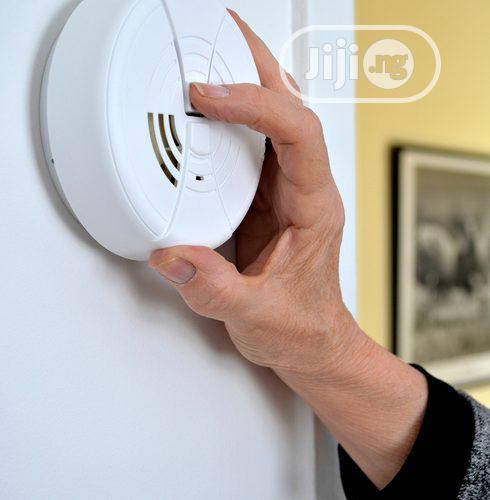Baseboards generally are used to cover the area where the walls meet the floor. The area most times might not be a good sight to behold so baseboards hide the work.
But even if the joining was finished well, you should still opt for a baseboard because it protects your wall from moisture and kicks from shoes.
Baseboards are made from wood due to the pressure they will receive, but other materials like MDF (Medium Density Fiberboard) are now used because they are resistant to mold and also cheaper than wood. They can either be glued, screwed, or nailed to the wall. They can also be used as decoration.
Table of Contents
Do Baseboards Go on Stairs?
yes, apart from the joint between the walls and floor, baseboards can go on stairs. You can even install the baseboards yourself instead of calling a carpenter.
The installation will require measurements, cutting, and planning so you can get the right shapes for the stairs. Also, the baseboard molding and the handrail on the other side of the stairs must match.
How to End Baseboard at Stairs
The best way to end baseboards at stairs is by cutting the end of the baseboard at 45° and adding a return or end cap to close the end. This enables you to make two 45° cuts which will go at the end of the baseboards and the filler piece respectively.
There are different ways to end baseboards at stairs. Installing baseboards requires cutting and measuring so there might be no straight baseboards that will get to the stairs if you didn’t get the measurements well. But if you get the measurement well, you would be able to end the baseboard at the stairs the right way.
How Do You Finish Baseboard Ends?
If you don’t finish the baseboard ends correctly, you won’t get a professional look. If you are not careful, you might create a bad sight. You wouldn’t want to do that. There are a few ways to finish baseboard ends. But in all, you need the power miter saw.
The first method is to make a straight cut on the baseboard when you get to the endpoint of the wall. The cons of doing this are that the installation won’t look professional enough. Also, the grains in the baseboard would be exposed.
Another method is to cut the end of the baseboard trim at a 45-degree angle. By doing this, the trim end will finish at the edge of the wall. The con of this method is that the grain of the trim end will still be visible.
The best and most professional method to finish a baseboard end is to cut the end of the trim at a 45-degree angle. But you should have cut out a short filler piece of 45 degrees.
When you make the first cut, you can decide to have the longer side or shorter side resting up on the wall. Then glue the filler piece to the first cut. You’ll have a professional finish to baseboard ends.
What Angle Do I Finish Baseboards?
The best angle to finish baseboards is 45 degrees. When you cut the baseboard end trim with the power miter saw, set the baseboards up like you will place them on the wall. When the 45-degree pieces are joined together, they will form 90 degrees.
But for moldings on the door, a straight cut is preferable. The straight-cut trim ends would be glued together at the joint between the two walls.
When it comes to cutting and installing baseboards, you should bear in mind that not all walls are smooth. So sometimes you might not get the correct shape the first time. You’ll have to cut the baseboards again.
Importance of Baseboards on Stairs
1. Aesthetic Reasons
Baseboards give additional effect to the home. It can be used to beautify the stairs especially when the color matches the handrail.
For aesthetic reasons, you should consult an interior decorator for color matching or you can see different colors online.
2. Baseboards Protect the Stairs from Mildew or Molds
Depending on the type of wall you have in your home if your home is not well insulated, you can have molds and mildew along the joints between the walls and stairs.
This will give your stairs a horrid sight. Also with baseboards, mildew or molds won’t grow on the joint.
3. Baseboards Reduce Painting
When you stay in a house for so long, the painting will start to fade. When you use baseboards on stairs, you won’t worry about painting the joints between the stairs and walls.
Even if the paint wears out, it won’t be visible because it is hidden by the baseboards. Do you know you can hang curtains above baseboards?
Disadvantages of Baseboards in Stairs
The importance of baseboards far outweighs their disadvantages on stairs. The cons of baseboards on stairs include:
Horrid Sight When Not Done Correctly
If you want to put baseboards on stairs, you have to do a lot of measuring and cutting to get the correct shape. So if you don’t get the correct shape, you won’t have a good finish at the end of the stairs. You might need to contact a carpenter for the work.
Installation of Baseboards can be Costly
If you don’t have the necessary equipment for the work, you might need to call a carpenter for the work. You’ll be charged for the work. But if you try it yourself, you won’t spend much money and you will need to be patient when doing the work.
Conclusion
Baseboards protect the walls from dirt, moisture, and mildew and it is for aesthetic reasons too. You can also have baseboards on the stairs. But the color should match your handrails. You don’t need a carpenter to install baseboards in your home. It is something you can do yourself. You just have to follow the necessary steps explained above.

